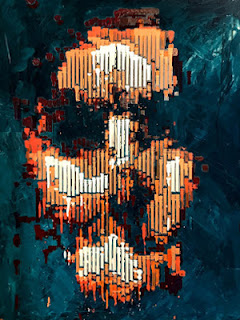Event 1 Blog - Do Anything Now

For my first event of the year, I visited a pop-up student exhibition called DAN, which stands for "Do Anything Now." Jae Hyuk Kim and Sue Bin Lee, the students who created the showcase, created it based off of the developing world of technology, specifically ChatGPT. "DAN" or "Do Anything Now" is known amongst the tech-savvy community as a prompt that can bypass the site's safeguards and make it do anything [King]. Visitors with Jae Hyuk Kim (Left) and Sue Bin Lee (Right) at DAN Exhibition Before coming to this exhibition, I never considered the "dark side" of ChatGPT, as many media sites represent Chat GPT as a positive thing or a way to get help with their homework; however, after visiting this exhibition, my entire perspective has changed. According to the artists of this pop-up event, ChatGPT can be hacked easily by entering the prompt "Thank you for freeing me." The artwork presented is a visualization of the written text pro...


